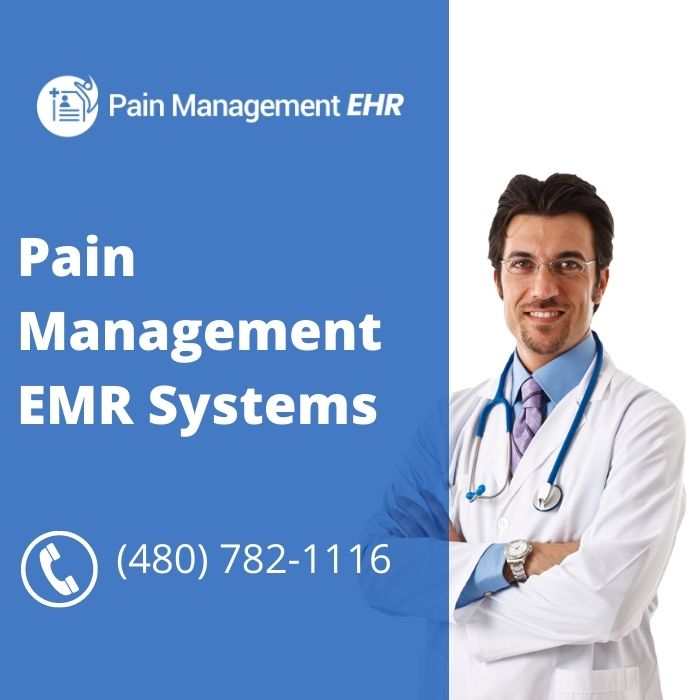Pain management EMR systems are supposed to help physicians work more efficiently and effectively, reduce risks, and make better decisions. The app allows patients to manage their check-in process and communicate with their doctor about their care. When running a pain management clinic and keeping accurate health records, it’s critical to use the EHR appropriately in order to deliver effective and timely care, especially for complex and expensive patients. When integrating EHRs in pain management practises to improve treatment quality, consider the following eight measures from Pain Management EHR:
Utilize the full potential of customized templates:
Individualized and customizable pain treatment templates With EHRs, clinicians can tailor their documentation process to their workflow or patients. Using templates effectively can save the time it takes to keep track of patient visits, findings, and suggestions, among other things. Clinicians must also use the custom template to chart and enter all patient information correctly, which is crucial for care continuity.
While using the scheduling tools, be fully aware of the patient’s visit history:
Physicians should have a thorough awareness of a patient’s visit history before arranging appointments. Effective pain management EHRs offer a detailed picture of a patient’s visit history as well as a user-friendly interface for defining predetermined criteria. Patient scheduling features in pain management EMR systems will enable the physician to learn more about the patient ahead of time and remind the patient of key reminders.
Go to the patient portal and activate it:
Filling out paper documents to register as a patient in the clinic is challenging for persons who are in pain. They will be able to easily set up their patient portal by enabling the EHR’s patient portal functionality. Patients who access their personal health information (PHI) through a secure, high-quality patient portal can do so at any time and from any location. They can maintain track of their vitals and test results by contacting their pain management professional. Rest for a few seconds after lowering the buttocks to the ground, according to the best EMR for pain management. Good pain management software includes a feature-rich, user-friendly interface that allows you to set specific goals.
Take use of patient scheduling software:
Patients can utilize the pain management billing software to make payments, book appointments, and more. Using software patient scheduling tools, the physician should analyse the patient’s information and history before scheduling a patient visit. These tools can also be used to set reminders to assist patients stay on track with their therapy.
Take advantage of the software’s special features:
Excellent pain relief EHR offers certain unique properties in addition to its core functions. The greatest EMR for pain management providers will be able to increase their productivity and efficiency by utilising all of these aspects. The following are some of these characteristics:
- Real-time reporting.
- Window of the Extremes
- Recommendation letters, communications, and an address book
- A part on neurology, as well as sections on assessment and treatment, are included.
- On a single screen, you may find information, order and review labs, assess patient data, graph patient vitals, and much more.
- You can prescribe on the go while monitoring patient health data to support clinical decisions with a digital prescription.
- Custom templates can help you develop and act on customised reports fast.
- Patient consent obtained via electronic means.
- Machine transcription.
Examine the patient carefully:
For patients who appear with pain, a precise and thorough pain evaluation is critical for obtaining an accurate diagnosis and deciding on the most successful treatment approach. Because both using the EHR and interacting with patients need concentrated attention, clinicians must strike the right balance between patient time and computer time.
Physicians must also ensure that data is entered only after the patient has expressed his or her concerns. They change their typing style so that patients can speak freely without being interrupted or needing to turn away to search up information or scribble notes. They should continue to communicate with the patient even if they need to enter data into the record during the session. EHR data entry can be aided by medical transcription services that are linked to EHRs.
Conclusion
While entering data into the EHR, Pain Management EHR experts should consider their patients’ needs. For pain management physicians, outsourcing transcription is a realistic option because it allows them to focus on better treating their patients by utilising the sophisticated features of their pain management EMR systems. Having the record updated by qualified medical transcriptionists is critical for accuracy, even if an automatic transcribe is provided in the EHR.

